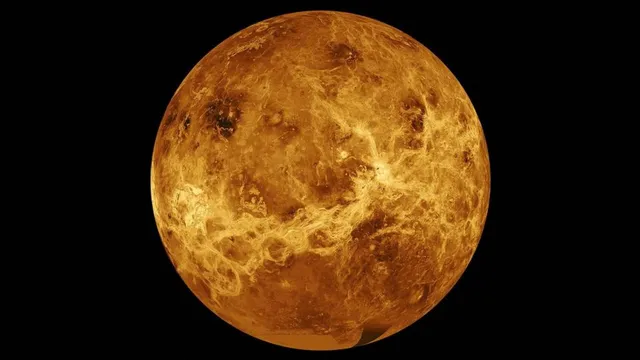- By Supratik Das
- Sun, 16 Nov 2025 02:29 PM (IST)
- Source:JND
Long considered Earth's hostile twin, Venus is turning out to be a riskier destination for future space missions, with NASA issuing a fresh alert after new observations showed its upper atmosphere is undergoing faster, more unpredictable changes than previously documented.
These developments raise serious engineering and safety concerns for orbiters, flybys, and potential landers planned by multiple global space agencies over the next decade.
Ionosphere Changing Faster
Recent measurements by NASA's Parker Solar Probe, while flying by Venus, detected unusual natural radio emissions, pointing to rapid fluctuations in the ionosphere of the planet. Previous models had suggested that, while harsh, the upper atmosphere was relatively stable. The new data, however, shows that solar activity can make the ionosphere expand or thin dramatically within short intervals.
Venus already poses extreme challenges with surface temperatures around 475°C, pressure 90 times that of Earth, and clouds laced with sulphuric acid. But the latest concern is the increased variability in atmospheric density. Even slight deviations can alter heat buildup around a spacecraft during entry.
Mission planners warn that an increase in temperature faster than was forecast could compromise heat shielding. Changes in density could also alter the speed of descent and trajectory, further complicating attempts to either land or maintain stable aerobrake manoeuvres. Scientists add that cloud dynamics and storm patterns are becoming increasingly erratic, adding yet more uncertainty.
Venus Becomes 'Early Warning'
NASA's findings shed light on how Venus, without the protection of a global magnetic field, takes the full brunt of solar storms. One CME recently slammed directly into the planet, stripping away gases from the upper atmosphere. Passing nearby, Parker picked up the rare data on just how fast the planet's atmospheric layers responded to the blast.
With the Sun approaching the next solar maximum, scientists are predicting stronger and more frequent flares. Being much closer to the Sun, Venus is increasingly a preview of conditions Earth might experience later on. A similar CME hitting Earth could result in widespread satellite disruptions, GPS failures, and, in extreme cases, even power grid instability.
ALSO READ: Jeff Bezos’ New Glenn Heads To Mars As Solar Storm Sparks Baba Vanga Prophecy Buzz: Watch VIDEO
Why Scientists Stay Interested In Venus
Three major missions are lined up for launch later this decade, NASA's DAVINCI and VERITAS, ESA's EnVision, and ISRO's Shukrayaan. All depend on accurate atmospheric models to plan their orbital paths, communication windows, and thermal protection systems. If Venus does turn out to be more volatile, mission teams may need to undertake extra testing, redesign elements, or delay timelines.
ALSO READ: Did You Know? This Oldest Interstellar Comet Was Born Before Earth, Mars And Even Sun Existed
Despite the growing risks, Venus remains scientifically important. Its atmosphere holds keys to Earth's climatic past and runaway greenhouse heating. Understanding the planet's changing environment could help scientists refine climate models and improve predictions for solar-weather impacts on Earth.

